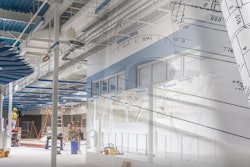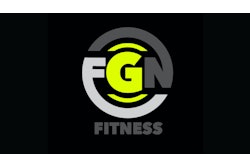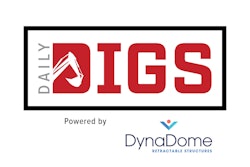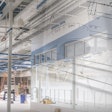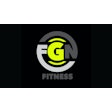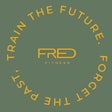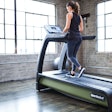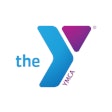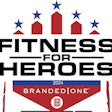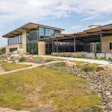Facility design is all about catering to your customers.
When I was a little girl, my grandfather had a pacemaker installed. It was a square device underneath his skin on his upper left chest that protruded out. I thought it was cool; I had no idea what it really meant, or just how young age 45 was to require such a device.
Today, my grandfather would be 90; he died 10 years ago. While his was not the generation that grew up thinking about exercising, much less going to a gym, I wonder whether, if this option were available, it would have helped him to stay healthier, longer. For even with his failing heart, my grandfather swam 2 miles a day in the local community pool until the time his heart just wouldn't sustain him any longer.
In this issue, we look at attracting and serving customers, like my grandfather, from a facility design standpoint - our special report of the month. Three well-known principals of architectural firms discuss their visions of today's facility design process, from which types of facilities are building new and/or renovating existing structures, to what the major trends are and how these trends are affecting design considerations. Some important trends have emerged, including eco-friendly construction and product selection, and integrated lifestyle facilities that include accommodating a broad clientele, from families to the disabled.
Making environmentally sound choices when building and/or renovating your fitness center is not only cost-effective, but it is downright important to members. We focus on this trend after hearing from so many of you in response to our Green-Ovations column (which we started in July of this year), impressing us and your members with the ways in which you have enhanced your facilities, while at the same time helping our environment. Read to find out just how important eco-friendly design is and the steps you can take in regards to lighting, flooring and temperature control.
Complementing this design feature are two sidebars. One discusses designing metal buildings, which can last longer and are energy-efficient. The other delves into the attention needed to design a group exercise studio that provides the ultimate atmosphere.
Member access, ease of use and comfort are what we focus on in our second major feature of this special report. Ensuring that your facility is set up to cater to both the able-bodied and those with chronic illnesses is becoming ever more important in this age of a graying population. It's time that fitness facility operators begin paying attention to the millions of individuals with disabilities who need access to fitness centers - even moreso than other populations.
The United Kingdom has recognized this by forcing fitness center operators to adhere to strict regulations that mandate a minimum package of disabled-access equipment be available for members. Fortunately, the U.K.'s Inclusive Fitness Initiative has not been completely lost on the U.S. While few fitness facilities are set up to accommodate exercisers with disabilities - and even fewer, according to our sources, seem to be looking into it - the newly created Inclusive Fitness Coalition aims to change this.
While it may be hard to grasp how to effectively integrate populations together into one facility, it is possible. And, as the article explains, it takes little extra effort except some specialized pieces of equipment that are no more costly than others, and proper layout. As you'll see, there are equipment suppliers who are now making an effort to design a line that will accommodate all exercisers.
In the end, facility design is all about catering to your customers - letting them know that you care about their concerns and are doing something about them. And, thinking more about the populations to whom you can and should cater - both for your business' sake and for the sake of others, like my grandfather.


















